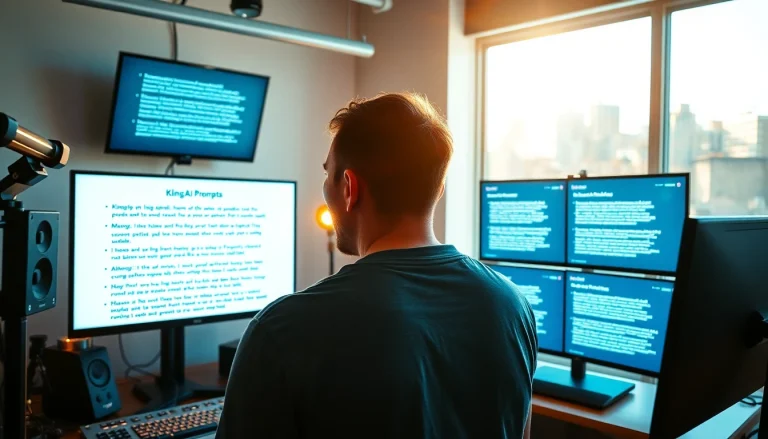Understanding Fan Engagement in the Music Industry
In the ever-evolving landscape of the music industry, fan engagement has emerged as a crucial pillar for artists striving to carve out a sustainable career. Engaging with fans isn’t just about numbers; it’s about building relationships that foster loyalty and advocacy. A committed fanbase can amplify an artist’s reach and influence, making it essential to prioritize efforts in this area. To grasp the nuances of fan engagement, it’s important to dissect its meaning, importance, and how it can be measured effectively. For a deep dive into strategies for enhancing your own Fan Engagement, let’s explore the key elements.
What is Fan Engagement?
Fan engagement refers to the myriad ways an artist interacts with their audience. This encompasses communication through social media, live performances, newsletters, merchandise, and interactive content. Understanding that fan engagement is not a one-sided affair is integral; it requires a genuine commitment from artists to invest time and effort into truly connecting with their audience.
Importance of Fan Engagement for Artists
Fan engagement plays a pivotal role in an artist’s career for several reasons. Firstly, engaged fans are more likely to purchase music, attend concerts, and share content across platforms, which helps amplify an artist’s visibility. Secondly, loyal fans provide valuable feedback and insights, allowing artists to tailor their offerings, whether it’s new music or merchandise. Lastly, a vibrant fan community fosters a sense of belonging, not just for fans but also for the artist, creating a symbiotic relationship that ensures long-term success.
Key Metrics to Measure Fan Engagement
To truly understand how well your fan engagement strategies are working, it’s essential to track specific metrics. Some of the key performance indicators (KPIs) include:
- Social Media Interactions: Likes, shares, and comments can provide insight into what content resonates with your audience.
- Email Open Rates: A high open rate indicates that fans are interested in your updates.
- Event Attendance: Measuring attendance at shows and meetups can reflect your community’s loyalty.
- Streaming Numbers: Increased streams on platforms like Spotify or Apple Music highlight growing engagement.
- Merchandise Sales: High sales figures can signal a strong connection between the artist and their fanbase.
Building a Strong Connection with Your Fans
Establishing a meaningful connection with fans requires a multifaceted approach. Below are some strategies artists can utilize to foster these relationships.
Strategies for Effective Communication
Effective communication is the foundation of fan engagement. Artists should strive to be approachable and relatable while maintaining professionalism. Key strategies include:
- Authenticity: Be genuine in your interactions, whether through social media posts or in-person events.
- Transparency: Share updates about your music, personal life, and challenges with fans to create a sense of intimacy.
- Consistency: Regularly communicate with fans through your chosen channels to keep them engaged.
Utilizing Social Media for Fan Engagement
Social media platforms are invaluable tools for artists looking to connect with their audience. By leveraging these platforms, artists can:
- Share Behind-the-Scenes Content: This gives fans a glimpse into your life and creative process.
- Host Q&A Sessions: Engage directly with fans by answering their questions live.
- Create Polls and Surveys: Ask fans for their opinions on new music or merchandise designs.
Organizing Interactive Events and Meetups
Hosting events provides an excellent opportunity for artists to connect with fans in person. Options include:
- Meet and Greets: Offer fans a chance to meet you before or after shows.
- Listening Parties: Invite fans to special events to listen to new music before its release.
- Workshops: Teach fans about your creative process, songwriting, or instrument techniques.
Leveraging Technology to Enhance Fan Experience
The advancement of technology has opened new avenues for how artists can engage their fans. From data analytics to virtual experiences, technology plays a significant role.
Using Data Analytics to Understand Your Audience
Artists can leverage data analytics to gain deeper insights into their fans’ preferences and behaviors. By analyzing data from streaming services, social media, and concert attendance, artists can:
- Identify Trends: Recognize which songs or genres are most popular among your audience.
- Tailor Marketing Efforts: Create personalized content that resonates with specific segments of your fanbase.
- Refine Performance Strategies: Plan setlists based on songs that have generated the most engagement.
Implementing Mobile Apps for Engagement
Artists can also create dedicated mobile apps to enhance fan engagement. These apps can provide:
- Exclusive Content: Share behind-the-scenes videos, unreleased tracks, and early access to tickets.
- Interactive Features: Include games and challenges that fans can participate in to win prizes.
- Direct Communication: Allow fans to interact with you and each other in a structured environment.
Creating Virtual Concert Experiences
The COVID-19 pandemic accelerated the move towards virtual events, and this trend continues to offer unique engagement opportunities. Artists can:
- Host Live Streams: Engage with fans through live performances, Q&A sessions, and chat interactions.
- Utilize VR Technology: Create immersive concert experiences that allow fans to feel present from their homes.
- Sell Virtual Merchandise: Offering exclusive digital goods can enhance the virtual experience.
Collaborative Approaches to Boost Engagement
Collaboration is another key strategy for boosting fan engagement. By working with others, artists can expand their reach and invigorate their fanbase.
Partnering with Influencers and Other Artists
Collaborating with influencers or other musicians allows artists to tap into different fanbases and enhance their visibility. Effective collaboration approaches include:
- Feature Collaborations: Work with other artists on tracks to expose each other to new audiences.
- Sponsorship Deals: Collaborate with influencers to promote your music or upcoming events in exchange for exposure.
Engaging with Brands for Joint Promotions
Partnering with brands can yield mutual benefits for artists and companies. Joint promotions often involve:
- Sponsored Content: Create unique content that aligns both the artist’s and the brand’s values.
- Product Collaborations: Develop co-branded merchandise that appeals to both fanbases.
Co-Creating Content with Fans
Inviting fans to participate in content creation can strengthen their connection. Strategies might include:
- Fan Remixes: Encourage fans to remix your songs and share their versions on social media.
- Lyric Challenges: Host contests where fans submit their own lyrics or concepts based on your music.
Evaluating and Evolving Your Engagement Strategies
The final piece of the puzzle is to constantly evaluate and adapt your fan engagement strategies. The music industry is dynamic, and staying relevant requires flexibility.
Analyzing Engagement Success and Challenges
After implementing engagement strategies, it’s vital to assess their effectiveness. Key evaluation methods include:
- Reviewing Data: Look back at your KPIs to identify what worked and what did not.
- Case Studies: Analyze successful peer campaigns to understand their strategies and successes.
Gathering Feedback from Your Audience
Regularly soliciting feedback from fans is essential for continual improvement. Techniques for gathering insights include:
- Surveys: Create simple, targeted surveys to gauge fans’ interests and preferences.
- Engagement Metrics: Monitor the success of various campaigns and take note of fan reactions.
Adapting Strategies to Meet Changing Trends
As consumer behavior and technology evolve, so must an artist’s engagement strategies. Staying updated on trends is essential for relevance. Strategies to adapt include:
- Continuous Learning: Educate yourself on industry standards, social media algorithm changes, and emerging platforms.
- Flexibility: Be willing to adjust your content and engagement style as trends fluctuate.








